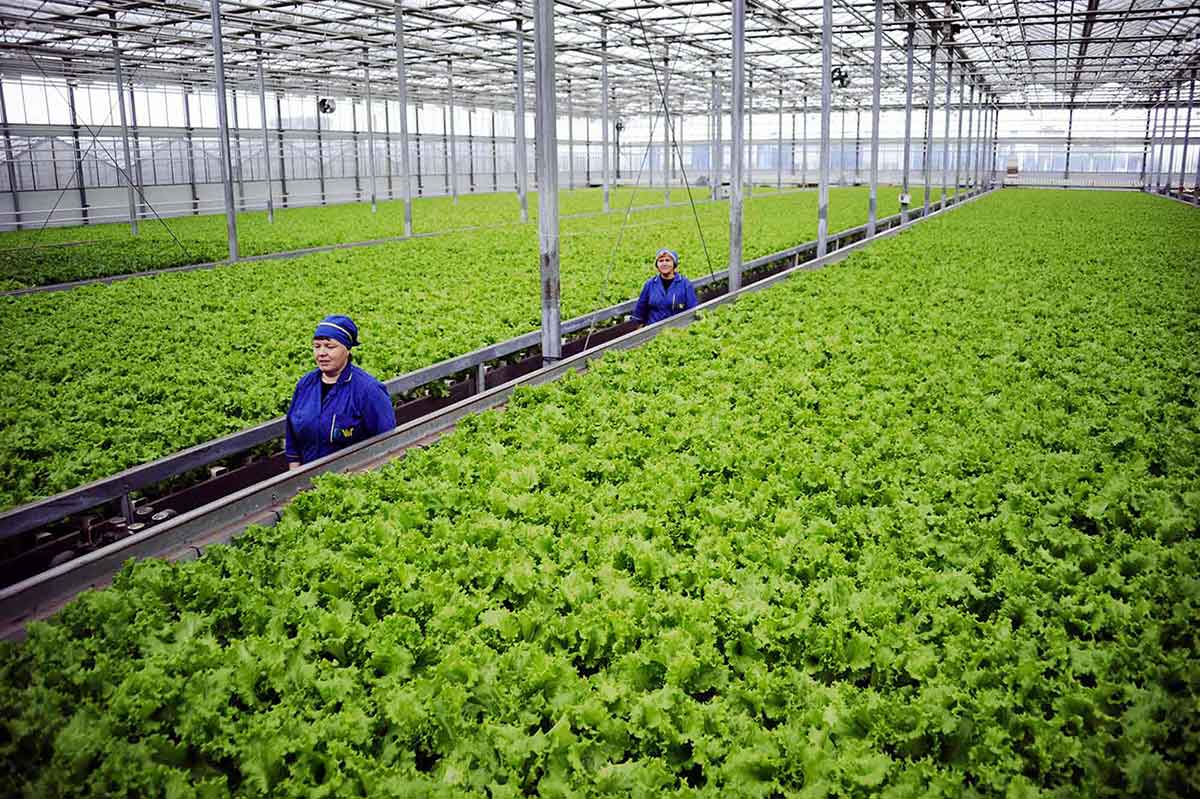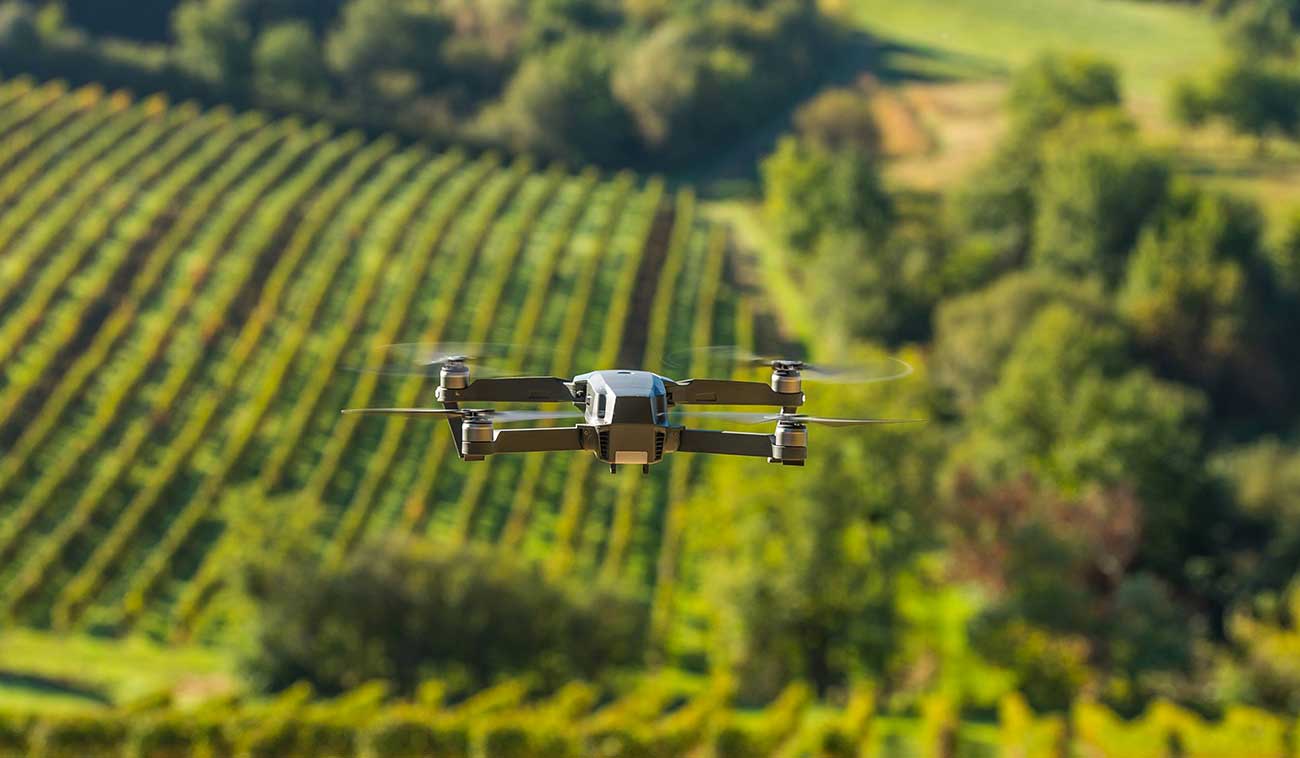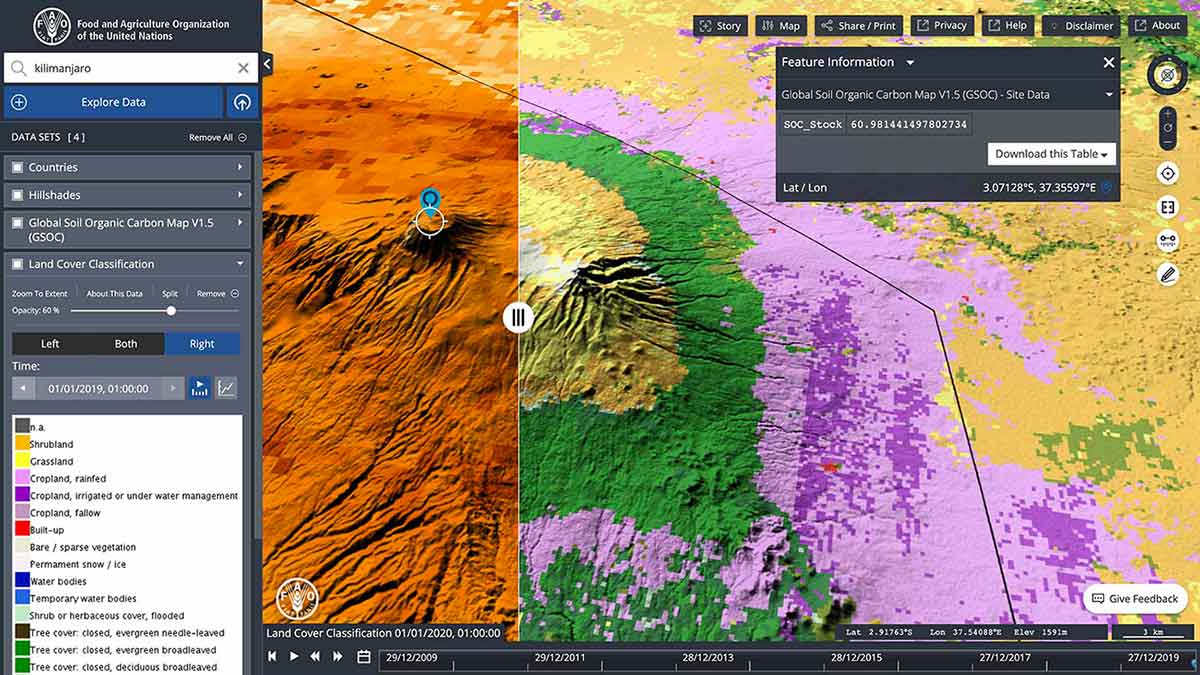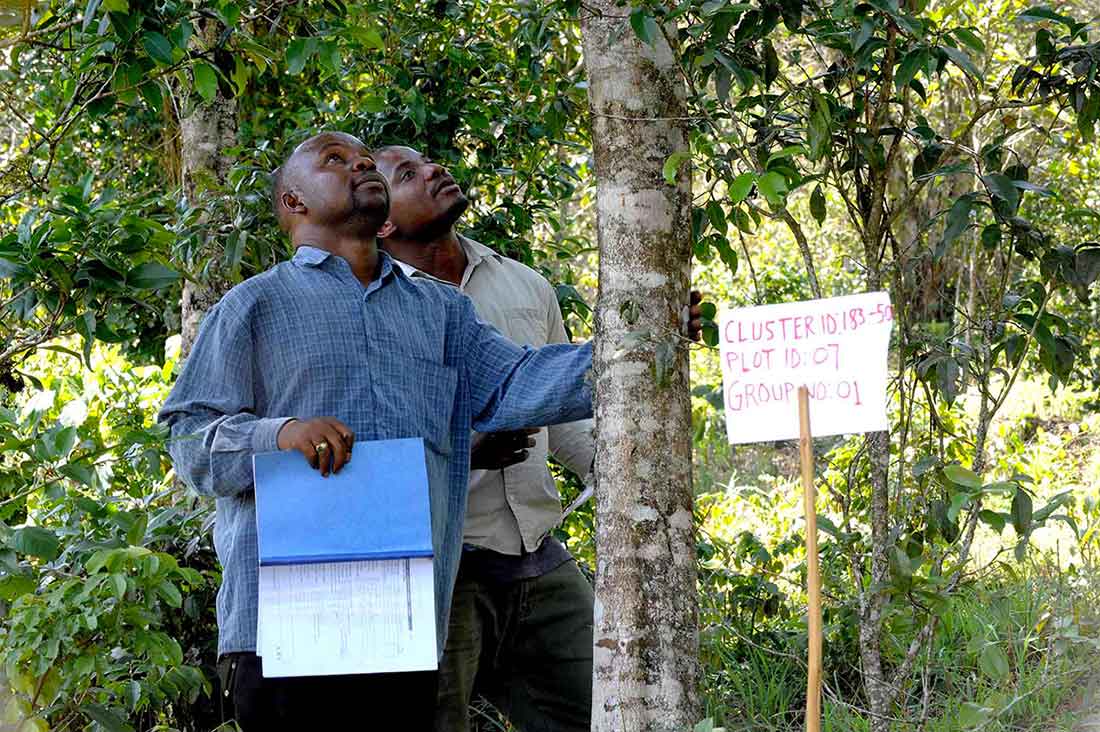Agriculture has been with us for millennia – a perfectible, yet otherwise rock-solid feature of sedentary societies. It is intrinsic, in our collective imagination, to the notion of food and sustenance, and thus sine qua non to our continued existence as a species. FAO’s very name posits agriculture as a given, as everlasting an area of human experience as the very act of consuming the fruits of the soil.
Yet as we watch hydroponic farms flourish in deserts; as we witness the rise of vertical farms; as we see our cities sprout vegetal skyscrapers, we may legitimately wonder if we still need the soil at all. In an era of climate emergency, of fading historical certainties, of trail-blazing biotechnological research, can we be sure that agriculture itself, with its time-worn footprint in human culture, is here to stay? If it is, will we still recognize it a decade or two down the line? Is farming still the default pathway to achieving food security for all?
Close up of hydroponics vegetables, including several types of lettuce, growing from a small sponge on water, Thailand. ©AdobeStock/Kudos Studio

The next quarter-century
Over the three-quarters of a century since FAO’s foundation, the simple equation of the institution’s beginnings – grow more to feed more – has become immensely more complex, if not outright obsolete.
A customer at a supermarket in Manzini, Eswatini, 20 km south of Mbabane. ©FAO/Giulio Napolitano

The world is growing more – more than ever before. It has also, unquestionably, fed more. But no longer. As FAO turns 75, with just ten years separating us from the global deadline to end hunger and malnutrition, dozens of countries remain off track. Undernourishment is rising again. Nearly 200 million under-fives are still stunted or wasted. A staggering three billion individuals cannot afford the most basic healthy diet. Obesity and diet-related non-communicable diseases are spreading in both adults and children, amid suggestions that an abundance of ultra-processed foods may have durably altered the human microbiota – the myriad microbial cells that populate our gut.
Our historic relationship to farming is being questioned as the COVID-19 pandemic reveals the fragility of food supply chains.
The lockdowns associated with the COVID-19 pandemic have certainly brought home the enduring centrality to our lives of well-functioning food supply chains. The crisis has also lifted the veil on the world’s reliance on agricultural and abattoir workers – frequently migrants, often exploited, unjustly relegated to the bottom of the social heap. Farming, in the broadest sense, is still a matter of vital import.

Yet in other respects – and certainly for the urban consumers who now make up most of the world’s population – the link between ground-based agriculture and food has become less palpable. In rich countries, the sector now only accounts for a small percentage of GDP. Utilized agricultural areas are declining; their contribution to wealth creation is limited. Across nations rich and poor, farming’s share of economic activity has shrunk. Over the last few decades, the centre of gravity of the agri-food economy has shifted away from the ownership of land (where it had been located for thousands of years) to the ownership of inputs, to the provision of services and processing power, and finally to the retail sector.
Vegetable growers walk between two vegetable plantations at the Minsk Vegetable Factory, Belarus. © Sergei Gapon/NOOR for FAO

Where agriculture has long supplied us with non-food products – timber has sheltered us; cotton has clothed us – this process is accelerating. From advanced therapies to engineering and transportation, farming – for much of its history churning out essential but low added-value goods while leaving many unfed – has spun off into a spectrum of tertiary applications. The world’s soils still hold great beneficial potential, yet the bacteria they harbour is much more likely to trigger pharmaceutical breakthroughs than to spur a new generation of horizontally managed crops. Conversely, the nutritious potential of non-agricultural, non-land-based biomass products such as insects or algae has yet to be fully explored and harnessed at scale. To this extent, rather than a rhapsodized fulcrum of human continuity, agriculture may soon come to be seen as a sub-branch of the bioeconomy sector.
Bioeconomy applications are redefining the meaning of agriculture in urban digital settings.
In retrospect, all of FAO’s approaches to date — state-driven productivism; development-led programme design; smallholder-centric sustainability initiatives – have reflected an immemorial perception of the intimate pairing between food and agriculture. All these approaches will retain a presence within FAO’s operational memory and policy portfolio. None of them, though, was devised for an era such as ours – an era of daily discovery, of blistering innovation, of root-and-branch re-imaginings. And no historical approach, for all its merits, has sufficed to put the world on an irreversible course to end hunger and malnutrition.
Drone flying above landscape with vineyards, France. ©AdobeStock/Jean-Bernard Nadeau

The context in which FAO, under new management, embarks on the next phase of its story is thus open, restless, multi-directional. Food may not have fully decoupled from agriculture, but short circuits have developed; their relationship has become less exclusive, more asymmetrical. FAO’s future will almost certainly be a different proposition.

Already active in the development of apps and financial products for farmers – including in plant disease diagnosis, stress analysis and crop insurance – the Organization is setting its sights on big data for food security objectives. Monitoring biomass water productivity through remote sensors; interactive platforms for post-harvest systems management; agricultural insurance over blockchain, with smart contracts connected to satellite-generated weather data and linked to mobile wallets – all are in the research phase or in the early stages of implementation.
An expert with FAO Kenya uses his mobile phone to enter coordinates on the eLocust3 app while tracing hopper bands of locusts. ©FAO/Luis Tato

With scientific findings and innovation reaching a multitude of users near-instantaneously, FAO can no longer nurse a traditional role as a disseminator of knowledge. Its next avatar must be as a real-time knowledge co-generator. This can only be achieved though intensive, proactive collaboration with those fora where the bulk of knowledge takes shape – academic institutions and the private sector.
At national level, meanwhile, governments are adopting frameworks to channel innovation: in mid-2019, at least 49 countries had bio-economy strategies in place. In the year since, the European Union has unveiled its Farm to Fork strategy, laying down the objective of a fair, healthy, environmentally-friendly regional food system. Such multiplying policy initiatives put the onus on FAO to foster enabling environments for implementation, in the form of analytical input, applied knowledge and regulatory systems. In 2019, for example, member states tasked FAO to devise a mechanism that harmonizes policies and standards in the digitalization of food production. Much of this will be technical; some will be about governance, from data protection to reducing the risk of bias to addressing the digital divide.
In African refugee camps, FAO’s sister organization, the World Food Programme, is already deploying chat bots to assess food and nutritional needs. With artificial intelligence (AI) set to gain increasing prominence in applications involving food security, nutrition and health, FAO has joined forces with the Vatican and global tech giants to underwrite a Rome Call for AI Ethics – a document melding moral vision, scientific foresight and regulatory effort.
Rome Call for AI Ethics – Principles
- Transparency: in principle, AI systems must be explainable;
- Inclusion: the needs of all human beings must be taken into consideration so that everyone can benefit and all individuals can be offered the best possible conditions to express themselves and develop;
- Responsibility: those who design and deploy the use of AI must proceed with responsibility and transparency;
- Impartiality: do not create or act according to bias, thus safeguarding fairness and human dignity;
- Reliability: AI systems must be able to work reliably;
- Security and privacy: AI systems must work securely and respect the privacy of users.
Until recently, linkups between a major UN agency, a world faith authority and Silicon Valley might have seemed improbable. Yet evolving patterns of social engagement and global governance point to extensive overlap and cumulative reach: between them, the signatories to the Rome Call, with its appeal for “algor-ethics,” touch the lives of billions of people. To a large degree, the near future will be about action coalitions, mobilizing diversely influential entities and masses of followers around transversal challenges – a form of digitally-enabled togetherness seeking humanity-enhancing outcomes. At the more targeted end of its collaborative drive, FAO’s Hand-in-Hand initiative has set out to “matchmake” countries along the wealth spectrum, donors and recipients, to serve defined food-security goals. The platform is overlaid with digital resources, a public good destined to accrue value through the capillary growth of bilateral partnerships.
The near future will be about action coalitions, seeking humanity-enhancing outcomes.
Launch of the Hand-in-Hand geospatial platform – July 2020
[Hand-in-Hand] boasts over one million geospatial layers and thousands of statistics series with over 4 000 metadata records, bringing together geographic information and statistical data on over ten domains linked to food and agriculture ‒ from food security, crops, soil, land, water, climate, fisheries, livestock to forestry. It also includes information on COVID-19’s impact on food and agriculture. The data has been sourced from FAO and other leading public data providers across the UN and NGOs, academia, private sector and space agencies. It also incorporates FAOSTAT data on food and agriculture for FAO’s 194 member countries plus 51 territories, from 1961 to the most recent year available.
Analogue, brick-and-mortar projects such as irrigation schemes will not end tomorrow. Nor will traditional capacity building or empowerment programmes. But the next stage in the Organization’s development will see its technical assistance and advocacy shift towards systemic support that is scientifically dynamic; informed by big data; tied to global macro-indicators; and geared towards societal transformation.
FAO’s Hand-in-Hand geospatial platform shows land cover for the Rombo district area in Moshi, Tanzania ©FAO

Geospatial information complements and is validated by information gathered on the ground. In 2012 the same district was monitored by forest rangers.

FAO’s ambition to provide a science-policy interface integrating all aspects of food security, including its climate and environmental dimensions, led to the establishment of a Chief Scientist post in mid-2020. Around the same time, the Organization published research showing that specific interventions along the length of food supply chains in every country would not only make healthy diets dramatically more affordable, thus improving the nutritional status of billions of citizens: they could also save up to four-fifths of the annual diet-related health and climate costs – amounting to USD 3 trillion – that will otherwise be plaguing the world’s budgets by 2030.
Children use a computer tablet as a learning device, Bangladesh. ©FAO/Mohammad Rakibul Hasan

FAO’s technical assistance will be informed by big data and geared towards a transformation of food systems.
That year – 2030 – remains the horizon for ending hunger and malnutrition in all its forms. In the race to fulfil that quest, we have seen landscapes shift, the faces of agriculture morph, the app edge out the plough. Food itself has changed, and so has our biological and cultural understanding of it. How we feed the world, in the end, matters less. But that we do – soon, durably, by any safe and dignified means – matters more with every breathing minute.



